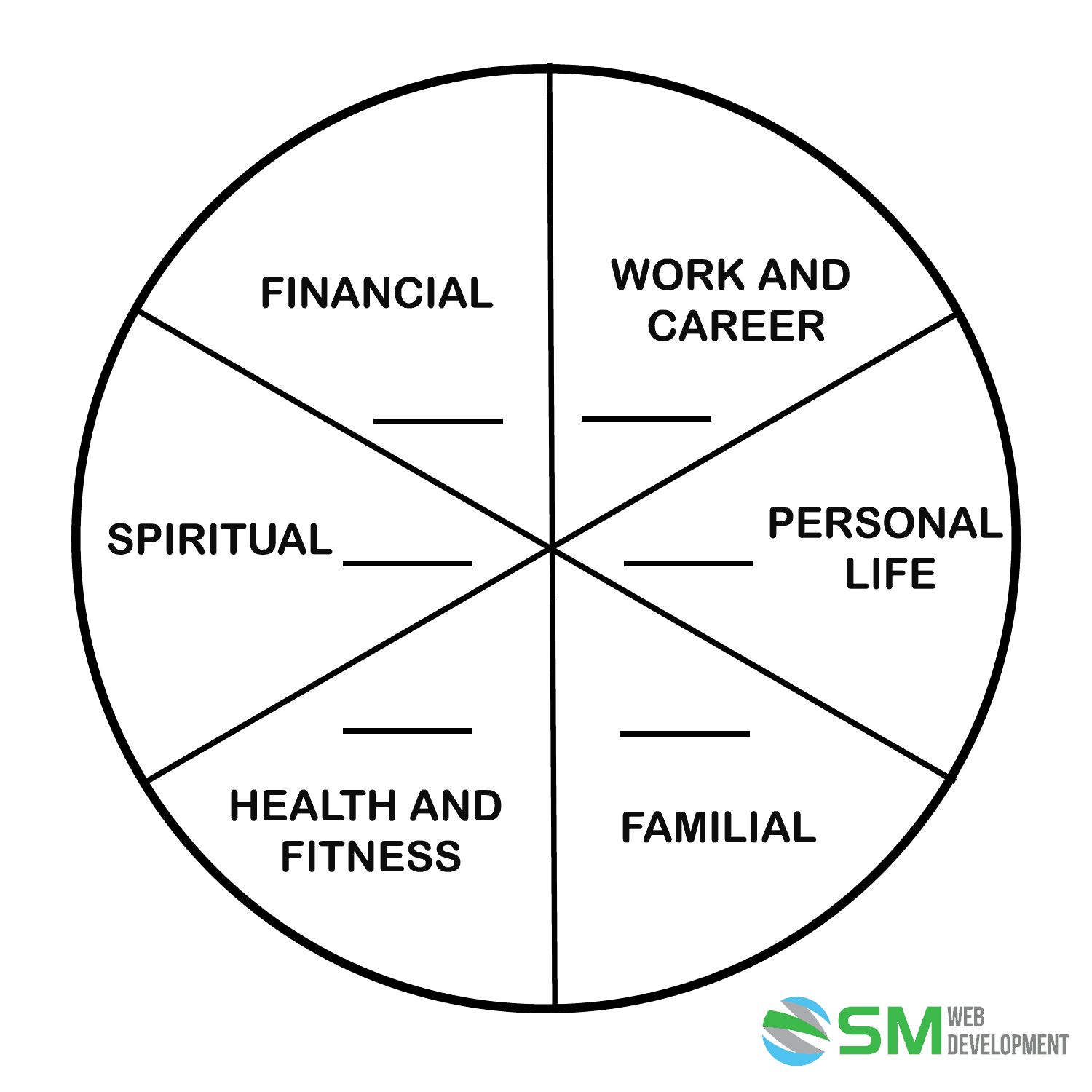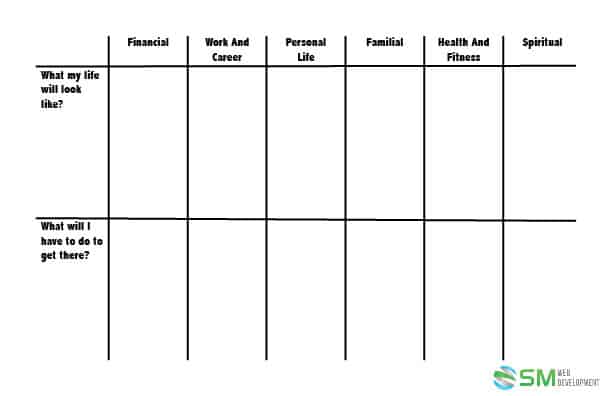
Setting And Keeping Your Goals
All the self help gurus from Grant Cardone to Tony Robbins all talk about how important goals are to your success and growth. Like most, every year I would set goals, usually around New Years, and then a month or two later I’d be back on the couch eating chips binge watching Netflix giving a donation to Goodlife Fitness every month.
If you follow the steps outlined here, you will set and stay true to your goals even if you’ve never followed through on a New Years Resolution.
The first thing you should do before setting any goals for the New Year is set a clear picture of where you are and where you want to be in a year from now. Otherwise, you might find yourself setting goals that do not align with your vision for your life.
1.Where Are You Now
To get started, we have understand where you are at. Have you ever tried to use a map without knowing where you are? It’s damn near impossible to figure out how to get where you want to go. That’s why we have to setup your baseline.
The best way to think of your life is to break it down into sections. This way you won’t get stuck only thinking about business goals and letting your personal life fall apart.
You can use these categories as a starting point. If you think something is missing or something doesn’t apply to you, feel free to adjust the categories:
- Financial
- Income
- Wealth
- Work and Career
- Personal Life
- Social Life
- Personal Growth
- Recreational
- Familial
- Relationship with your spouse, or your romantic life in general
- Relationship with your family, or what you consider your family
- Health and Fitness
- Spiritual
Now make a circle on a sheet of paper, break it into 6 pieces and write each of the 6 categories in one of the sections. You pie should look like this:

Really think about each section. Picture what your life would in each category, if could live your perfect life.
Think about where you are now. Are you happy with your health? Are your savings where you would like them?
Write a number between 1-10 in each of the section to represent where you are at right now compared to your perfect life (1 being the farthest from perfect and 10 being what you consider perfect).
2. Where Do You Want To Be
Before you can set goals you have to set the point A and point B or our journey.
Go through your circle again. Now you will be writing another number but this time it will represent where you would like to be in the next 5 years. Think about what that would look like for each segment.
3.How Will You Get There
Make 6 columns on a sheet of paper. One for each section. Add two rows. One labelled “What my life will look like?” and “What will I have to do to get there?”. It should like this:

Write down what your life would look like for each of these sections. Try to use measurable targets, so you have some way to know if you are on track. Things like: “I will make $xxx/year”, “I will call my parents once a week”. You won’t have anyway to know for sure that you are on track if you have targets like: “Have a better relationship with my parents”.
Continue on your 6 columns and write what you will have to do in the next year to get where you want to be. I know you were planning around 5 years but you need someway to really push yourself.
Think about what you need to give up in your life, what you will need to learn, what you will need to do to achieve your goals.
Think back from the end of the year. If you set a goal to make $150,000/year and you are currently making $50,000/year chances are you aren’t going to do it in a month. So work backwards. How much income will you need to add each month?
4.Defining Actions To Reach Your Goals
Take the last section in your columns. You should have a few actions there already from thinking through things you will have to learn and things you will need to give up. Try to add even more actions here. If you know you need to add 1,000 to your income this month to be on track to meet your year goal, what are you going to learn, quit and do this month to achieve that? It may be learning how to better invest the money you have. Maybe it’s finding a freelance job to help supplement your income.
The whole point here, is to get a list of actions you can take each month to move you towards your goal.
5.The Key To Your Success – The Growth Journal
Now this is the secret sauce. You will use your Growth Journal everyday to keep you on track and to keep you honest with yourself. Get yourself a small day planner or large calendar. You will be looking at this everyday, so get something you like.
Now at the beginning of each month you are going to want to set a goal for the month, each week and each day. Things like post on your business instagram 3x a week, attend a networking event that month, or 30 mins reading a day. Write all your goals for each week, day and the whole month at the beginning of the month. Really make sure you have a day goal as it will help build new habits to keep you moving forward.
Building New Habits With Your Growth Journal
In Psycho-Cybernetics, Maxwell Maltz noticed that it takes around 21 days to adjust to something new. He noticed it with his plastic surgery patience when he would give them a new chin or nose but it has become the basis for a lot of popular theories on habits.
Your daily goal in your growth journal pushes you past the 21 day mark building new success habits in your life. So choose them wisely, and make sure you stick to them using the strategy discussed below in Tracking Your Progress.
For example, I really struggle with my blog and writing in general which is why I have 30 mins of writing as one of my daily goals. I also have 30 mins of reading, to make sure I am always taking in new ideas and learning something new.
Tracking Your Progress In Your Growth Journal
Now be sure to track your progress. Each day write down what you have done to work towards your goals for that day, week and month.
Jerry Seinfield once disclosed his secret for success in comedy. He said you need to write everyday but what’s important here is how he kept himself accountable. He would put an “X” on every day that he would meet his writing goal. As you start to get a few days in a row, you start to create a chain. You never break the chain.
Put an “X” through every day you meet you day goal, and “X” through every week you meet your week goal, and an “X” through every month you meet your month goal.
This works extremely well. I was in a yoga challenge a few months back and they were using a sticker chart to track your classes. I know it sounds a bit immature but I became addicted to getting stickers. I couldn’t have a day with a missing sticker. I couldn’t let the sticker chain have a missing link. I made it through the challenge but I don’t know, if I would of without those that addictive sticker chart.
This will help keep you motivated. You will get addicted to keeping some sort of achievement on each day. If you find you are starting to lose your motivation or feel like your stagnant, look back at your growth journal. You’ll see all the “X”s and hard work you’ve done, reinforcing your motivation going forward.
Summary
You can never set a road map to where you want to be without knowing where you are. Once you know where you are the next step is to decide where you want to be. Then set some measurable goals to get you there. Things like “increase my income to $100,000” or “work out three times a week”.
The most important thing to keep you on track is to have a growth journal. The growth journal keeps you motivated and keeps you accountable to yourself. It allows you to track your daily, weekly and monthly progress. Put an “X” through each day, week and month that you meet your goals.
Be sure to check your journal everyday and check in at the end of every month to see how you are doing and adjust your goals for next month. Stick to your journal and you will be in a whole new place a year from now.
Other posts we think you’d like:
Spending Time On The Important Things
John wants you to run to marketing and give an ad spend update. Jim wants you to finish that main page design. Gabrielle needs some help with a customer. You know you need to work on that blog post you've been putting off. Sound a bit overwhelming? How do...

